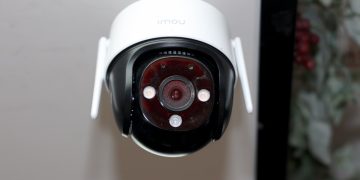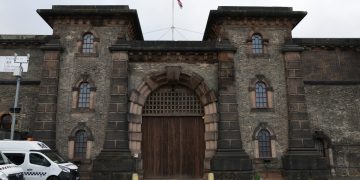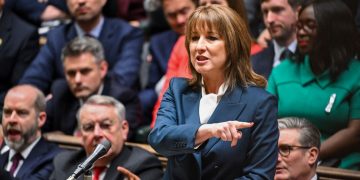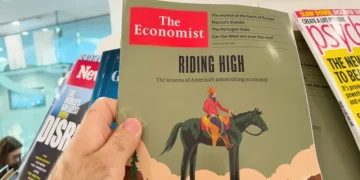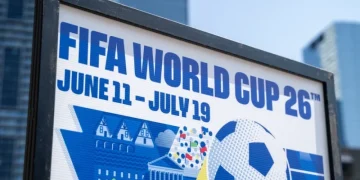It is the noisy problem that keeps residents across the country awake late at night, as engines roar and tyres screech – leading to fatal crashes tragically often.
Illegal street racing is a menace on many British roads, leading people to question why speed cameras cannot prevent its dangers.
That is what Labour MP Sarah Coombes asked police last year when she visited Kenrick Way, a notorious racing hotspot in her constituency of West Bromwich.
“The police said to me: ‘Sarah, all these racers have got ‘ghost plates’ now, so there’s no point’,” she recalls. It was the first time she’d heard that phrase.
Officers explained how it was becoming increasingly common for people to spray their cars’ number plates or place a plastic film over them, making them unreadable by most automatic number plate recognition (ANPR) cameras.
These infrared cameras work by distinguishing black lettering against a number plate’s white reflective background. If the characters are also made reflective, they become invisible to sensors, even if they still appear normal to the human eye.
It means it is incredibly simple to evade not just speeding fines but also road tax, insurance claims, parking fees, and charges for congestion zones or airport drop-offs. Plus, criminals can avoid being tracked.
Coombes was outraged to hear how weak the penalties are. “If you are caught with a ghost plate – which is vanishingly unlikely – the fine is only £100, with no points on your licence,” says the MP.
Given that speeding penalties range from £100 to £2,500, plus three points, “it’s absolutely in your interest to get yourself a ghost plate” if you are intent on racing, she explains.

It is not just aspiring Formula 1 drivers who are exploiting this weakness in ANPR, however.
It has previously been estimated that one in 15 drivers are using ghost plates. Dr Michael Rhead, a former government adviser on ANPR, suspects the number is now far higher and requires urgent action.
One investigation in London found that 40 per cent of cab and taxi drivers may be using ghost plates. At a single location in the West Midlands, an operation over the summer spotted 2,961 vehicles using them over two weeks.
Rhead believes the introduction of charges on more of Britain’s roads – such as London’s ultra-low emissions zone (Ulez) – is encouraging members of the public to become lawbreakers, either out of pure resentment at the cost or to afford their commutes when budgets are so stretched.
This is no excuse, he makes clear. “The issue is being swept under the carpet,” he says. “It concerns us tremendously.”
The problem for law-abiding drivers
Experts say ghost plates are just one of several major problems with the UK’s vehicle registration system. These are currently being examined in an inquiry by Coombes and other members of the All-Party Parliamentary Group on Transport Safety.
More people are falling victim to car cloning, for example. This is where criminals copy the registration numbers of law-abiding drivers who drive the same model of vehicle, leading to innocent people suddenly receiving huge fines and even visits from bailiffs.
The number of fines having to be cancelled in London alone due to cloning hit 36,794 in 2023, the BBC revealed last year – a 64 per cent rise in just three years. Culprits can face up to two years in prison and unlimited fines.
Statistics show that the abolition of paper tax discs in 2014, in favour of checking number plates, also led to a large rise in evasion of vehicle excise duty. From calculations shared with The i Paper, Rhead reckons the Government has lost £1bn over the last decade, despite the Driver and Vehicle Licensing Agency (DVLA) saying 98 per cent of vehicles are taxed correctly.
In fact, given all the authorities and private companies that rely on ANPR, he believes the total cost to taxpayers and the wider economy from various flaws in the system is almost certainly “billions of pounds every year”.

Professor Fraser Sampson, a former police officer who served as the UK’s biometric and surveillance camera commissioner until 2023, said: “Unscrupulous drivers are already gaming the system easily and with virtual impunity. All the incentives are for them to keep doing so – and more will copy them, leaving the growing cost and risk for the law-abiding motorist to pick up.”
In his submission to the MPs’ inquiry, seen by The i Paper, Sampson writes that relying on a network of “woefully poor” cameras that are “unable to detect flaws, forgeries or fakes” is “breathtakingly naïve” and “indefensible”.
He is angry that DVLA has allowed more than 43,000 businesses to register as number plate suppliers. This quick process costs just £40, with no background checks or any further monitoring.
Official sellers are required by law to ask for a buyer’s ID and proof of entitlement to a registration number, but experts fear that too many suppliers are failing to do this, and that the DVLA does not carry out enough unannounced inspections.
In June, Sampson and colleagues revealed that an investigation had caught 135 registered suppliers willing to sell cloned plates. This is the tip of the iceberg, he believes.
“Criminal networks are exploiting the yawning vulnerabilities in the surveillance system and the total inadequacy of the Government’s registration scheme for plate sellers,” he writes.
How criminals are benefitting
Last year, Daniel Day from Tipton in the West Midlands was jailed for selling 7,000 cloned plates to gangs, having played a “crucial role in the criminal underworld” according to police. This can have deadly consequences.
In January, a plate seller in Slough was fined £5,500 after pleading guilty to supplying a cloned number plate that was used on a stolen Volkswagen Golf during the murder of Kyron Lee in 2022. Police said that Mohammed Waqas Akhtar produced plates “with no questions asked”, for killers trying to “conceal their identities”.
Just a few weeks after Coombes visited Kenrick Way with police last year, a stolen Porsche turned off that same road and hit a Toyota, killing a toddler inside and injuring four adults. The driver, Sharjeel Shahzad, held only a provisional licence, had been banned from driving for six months, was awaiting trial for dangerous driving – and was using false plates. He was jailed for 15 years.
Criminals have probably been using false plates ever since the first escape in a getaway car. It would be impossible to stop this tactic altogether. But experts are adamant that it should not be so easy.
Coombes worries there is nothing to prevent convicted criminals from legally becoming plate suppliers.
She blames “complacency” by the DVLA. The MP feels frustrated when she reads articles about the agency’s success in selling personalised plates at auction. “They’re very able to make money by doing that, but they don’t seem to be able to do their fundamental regulatory job.”
Underlining how important ANPR is, Coombes points out that it helped to identify Sarah Everard’s murderer Wayne Couzens in 2021.

Sampson agrees the DVLA has been “lamentable” and stuck in “ostrich-like denial”, arguing it should be stripped of responsibility for regulating suppliers.
Responding to these criticisms, a DVLA spokesperson highlighted that a review is underway on standards for plates, aiming to “ban production of plates that are specifically designed to evade ANPR cameras”.
They said the DVLA works with police and Trading Standards to enforce the “strict laws” in place to ensure suppliers are registered with the DVLA and carry out “robust identification” of buyers. It is considering implementing tighter checks on sellers.
“Anyone caught driving with illegal number plates can face up to two years in prison,” they added.
Coombes advocates increasing the fine for ghost plates to £1,000, plus six licence points.
Sampson backs this, but says it will only be a deterrent if people fear being caught, which requires more powerful cameras.
Rhead is optimistic that technology is improving, having tested better infrared sensors in his lab. But rolling this out will take time and require more funds.
Ultimately, it is hard to imagine what could replace number plates to instantly identify vehicles, especially when they are travelling at high speed. But Sampson hopes the Government will fund research so a clever inventor will crack “the ID challenge of our age”.

